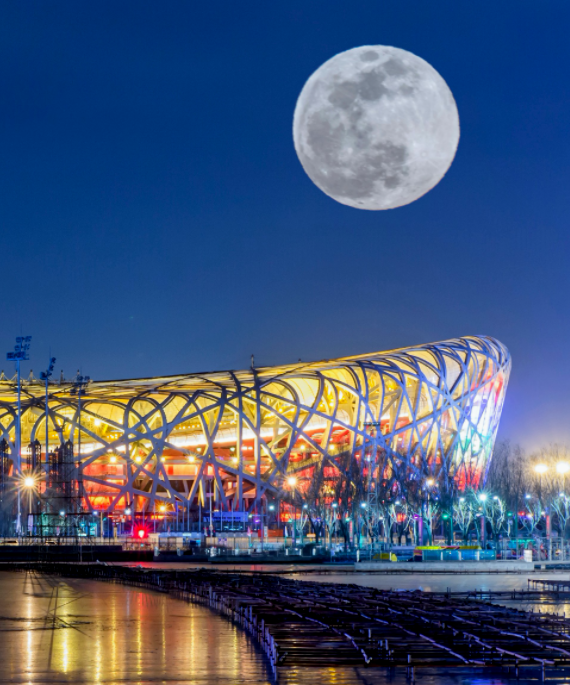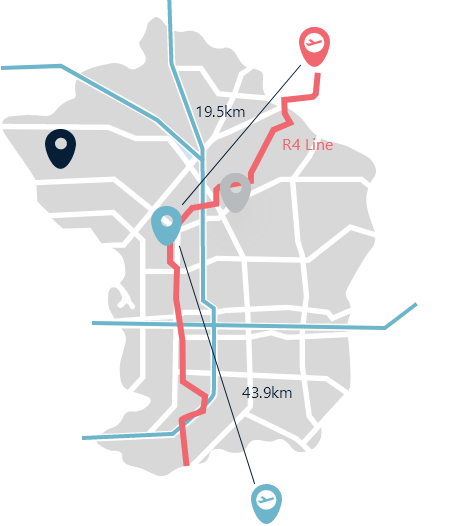THE STORY OF CHAOYANG

Overview of Chaoyang District
Situated in eastern Beijing, Chaoyang District is the largest and the most populous urban area in Beijing, covering a total area of 470.8 square kilometres (accounting for 3% of Beijing). Administering 24 subdistricts, 19 townships (466 communities and 144 villages altogether), it has a permanent population of 3.452 million. The district used to be an important industrial area, and "Vegetable Basket" and "Rice Bag" for Beijing people before the reform and opening-up.
Thanks to the rapid development in recent years, Chaoyang has become an economic powerhouse and a significant window for foreign trade in Beijing.
CHAOYANG DISTRICT, A PLACE OF OPPOTUNITIES
Located in the heart of the city, Chaoyang District is the epitome of a capital function cluster. In the new edition of the General City Plan for Beijing, it is designated as the central urban area in Beijing. It is positioned as:
• The world-class central business district
• An international science, technology, culture and sports exchange district
• A cluster for a variety of international communities
• An innovation-driven cultural front for the capital
• A large-scale eco-environment construction and demonstration district
• A high-quality and comprehensive pilot district for urbanisation reform
Also, centred on "cultural enrichment, global growth, large-scale greening", Chaoyang District strives to be the pioneer of Beijing, promoting high-quality development in all aspects of economic society:
• The district enjoys the most colorful cultural resources in China as there are 400 notable media organizations at home and abroad, such as CCTV and Reuters, as well as more than 80 well-known art performance groups like China Oriental Performing Arts Group and China National Symphony Orchestra;
• As of 2014, centred around CBD-Dingfuzhuang International Media Industry Corridor, the district has built its first National Cultural Industry Innovation Experiment Zone for policy and service to provide a vivid display of turning old, dilapidated factories into cultural parks;
• Furthermore, it is a demonstration area for the national public culture service system. There are 52 museums in the district, taking up 1/4 of the total in Beijing, together with an array of distinctive cultural brands like the 24-hour self-service library, the digital cultural community and the urban bookstore.

With the convergence of international resources, Chaoyang District serves as a window for foreign exchanges. It is long known as "the First District for Foreign Exchanges in China" as it is the place with 99% of foreign embassies in China, 80% of international organizations and international chambers of commerce in Beijing, 70% of regional headquarters of multi-national corporations, 65% of foreign capital financial organizations and more than 50% of international-level conferences.
Besides, there are a number of landmarks built in different periods, such as Intime Department Store, China World Trade Centre Tower III and CITIC Tower, as well as trendy street blocks including Parkview Green, Taikoo Li Sanlitun and The Place, epitomizing the achievements of Beijing as a metropolis.
Moreover, as a pilot district in Beijing, the district launched three rounds of further opening-up of its service sector in a row, making it extremely attractive for foreign investment. As one of the six high-end industrial function zones in Beijing, the CBD plays a vital role in the city's industrial upgrading, cultural exchanges and open innovation.
Chaoyang District also takes pride in its sound international service functions as it boasts 8 international medical institutions and 16 out of 19 schools for children of foreign personnel in Beijing. Meanwhile, the Wangjing International Talent Community is around the corner and it will contribute to a "quasi overseas" environment in the district once built.

-
Central Business Centre
-
CNCC
-
Chaoyang Science Park
-
Beijing Daxing International Airport
-
Beijing Capital International Airport

